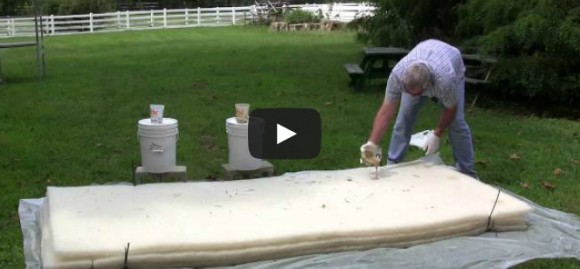Wetlands are effective tools for cleaning polluted water. As the plants grow they remove excess nutrients from stormwater runoff and store it in their leaves, while adding oxygen to the water. Their roots also support a habitat for microorganisms that feed on excess nutrients. A way to help lakes or ponds from becoming a soupy mess from overgrowth of algae is to build a floating wetland. In this video, Rutgers Cooperative Extension of Camden and Burlington counties demonstrate how to make a “Do It Yourself” artificial floating wetland for lakes and ponds to help reduce levels of nitrogen and phosphorous.


